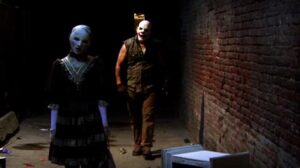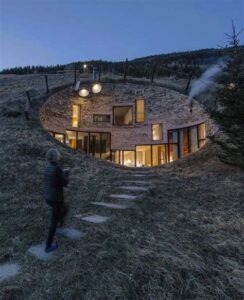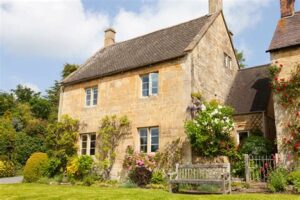Discover ‘The House That Jack Built’ game, its origins, rules, benefits, and exciting variations to elevate your playtime experience.Welcome to our exploration of “The House That Jack Built” game, a delightful and engaging activity that captures the imaginations of players of all ages. With its roots in a well-known nursery rhyme, this game encourages creativity, memory, and logical thinking, making it a fantastic choice for family gatherings or social events. In this blog post, we’ll delve into the origins of the game, understand the rules that govern play, and uncover the many benefits that come from participating in this whimsical activity. Additionally, we will look at various intriguing variations of the game, ensuring that every player can enjoy a unique experience. Whether you’re a seasoned gamer or new to the world of interactive storytelling, this post will guide you through all the wonderful aspects of “The House That Jack Built.”
What is ‘The House That Jack Built’ Game?
‘The House That Jack Built’ is a traditional children’s nursery rhyme and a popular memory game that has entertained generations. The game combines storytelling and repetition, making it not only fun but also educational.
In this game, players take turns adding to a cumulative story that begins with the phrase “This is the house that Jack built.” Each player must recite the previous elements of the story before adding their own, creating a chain that gets longer with each turn. This aspect makes it a great tool for enhancing memory and concentration.
The story typically includes various characters and elements, such as the man who lived in the house, the animals, and objects related to them, all building upon the central concept. This not only helps in remembering the sequence but also in fostering creativity among the players. Overall, ‘The House That Jack Built’ serves as an engaging and educational experience that can be enjoyed by players of all ages.
Origins of the Game
The Origins of the House That Jack Built Game can be traced back to traditional children’s nursery rhymes. This engaging oral tradition has roots that span across various cultures, making it a beloved classic in many households. The rhyme structure and repetitive nature of the game capture the imagination of children and adults alike.
The game is believed to have originated in England in the early 19th century, with its earliest known publication appearing in 1810. As time went on, the game’s catchy phrases and simple mechanics made it a popular choice for family gatherings and educational settings.
The essence of the game is entrenched in the storytelling tradition, where each player adds a line that builds upon the previous one. This not only enhances memory skills but also promotes creativity as players invent their own twists to the story.
Over the years, variations of this game have emerged, adapting to different cultural contexts while maintaining the core concept. This adaptability speaks to the game’s universal appeal, ensuring that the House That Jack Built remains a timeless piece of childhood lore.
Rules of the Game
The House That Jack Built is a classic children’s game that combines elements of storytelling and memory. While the concept is simple, the rules ensure that the game remains engaging and fun for players of all ages. Here are the basic rules to help you get started.
1. Players: The game is best played with a group of at least three players but can accommodate more. Each player takes turns participating in the story.
2. Story Structure: The game begins with one player stating the first line of the song: This is the house that Jack built. Each subsequent player adds a new line about something that is connected to the previous lines. For instance, if the previous line mentions the cat, the next player could say, that ate the rat.
3. Order of Play: Players should sit in a circle and take turns in a clockwise direction. It is crucial to keep track of the order, as confusing turns can disrupt the flow of the game.
4. Memory Challenge: As the story grows longer, players must remember all the previous lines in the correct order. If a player fails to recite them properly, they may be out for that round.
5. Winning the Game: The last player remaining who can accurately recite the full story wins. You can also introduce variations by allowing eliminated players to join again in the next round or add funny penalties for going out.
The beauty of the House That Jack Built game lies not only in its entertaining rules but also in the creativity it inspires. Enjoy playing and watch as each unique version of the house unfolds!
Benefits of Playing the Game
Playing The House That Jack Built game offers numerous benefits that enhance the gaming experience for players of all ages. One significant advantage is its ability to boost memory and recall skills. As players progress through the game, they must remember a growing list of items and characters, which helps improve cognitive function.
Another noteworthy benefit is the promotion of social interaction and teamwork. The game can be played in groups, facilitating communication and collaboration among players. This aspect makes it an excellent choice for classrooms, family gatherings, or social events.
Lastly, engaging in this game fosters creativity and imagination. Players have the opportunity to construct their narratives as the game progresses, encouraging them to think outside the box and come up with unique interpretations. Overall, The House That Jack Built game is not just fun bu
Variations of the Game
The House That Jack Built game is not just a simple children’s rhyme; it’s a versatile activity that can be adapted in numerous ways to enhance fun and learning experiences. Here are some popular variations of the game:
- Charades Variation: Instead of simply recalling the previous lines, players can act out what they are describing, adding a physical element to the game.
- Theme-based Versions: Adapt the game to specific themes, such as holidays or seasons. For example, players could create versions of the game around Christmas, including items like the tree that Jack decorated.
- Creative Storytelling: Players can change the narrative as they progress, allowing for more creativity. Each player can add a twist to the story, making it unique to their imagination.
These variations not only contribute to cognitive engagement but also foster creativity among participants. Players can expand their vocabulary and enhance their memory while enjoying the collaborative aspect of the game.
Moreover, the adaptability of The House That Jack Built ensures that it can be tailored for different age groups and settings, from classroom activities to family game nights. As children grow older, the game can evolve to include more complex rules and themes, keeping it fresh and exciting.
In summary, The House That Jack Built offers a fantastic opportunity for variation, making it a game that can grow with its players while nurturing imagination and teamwork.
Frequently Asked Questions
What is ‘The House That Jack Built’ game about?
The game is a whimsical and creative retelling of the classic nursery rhyme, where players construct a house while engaging in challenges and activities based on the storyline.
Who is the target audience for ‘The House That Jack Built’ game?
The game is designed for children and families, offering age-appropriate gameplay that encourages creativity, storytelling, and teamwork.
What are some key gameplay mechanics in ‘The House That Jack Built’?
Key mechanics include resource management, building structures, completing mini-games, and participating in narrative events that push the story forward.
Can ‘The House That Jack Built’ be played online?
Yes, many versions of the game are available online, allowing players to join from anywhere and play either cooperatively or competitively.
What materials do players need to play ‘The House That Jack Built’?
Players usually need game cards, building blocks, or digital devices, depending on the version of the game they’re playing.
Is there an educational component to the game?
Yes, the game includes educational elements such as math skills, creativity, and problem-solving, making it beneficial for young learners.
How can parents incorporate ‘The House That Jack Built’ into family game nights?
Parents can use the game to encourage interaction, foster teamwork, and provide a fun way for family members to bond while learning together.





